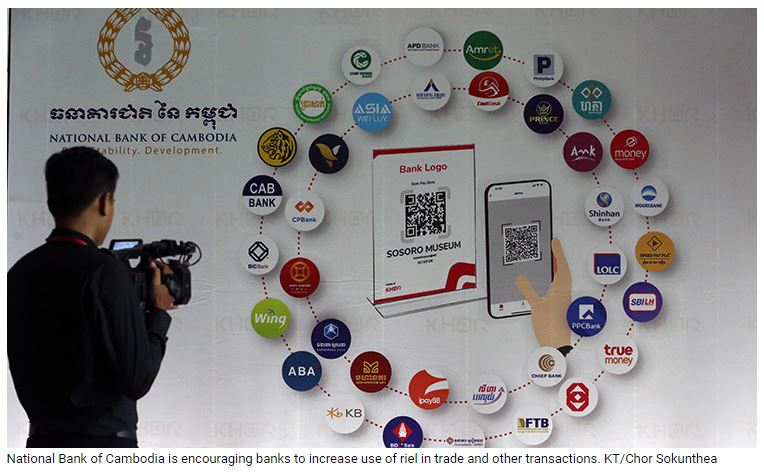Cambodia: Global trade in local currency – a long-drawn process
To accord due prominence to the local currency and reduce the Greenback’s dominance, many countries are in the process of exploring the possibility of using their national currencies in trade and other global transactions. As part of the efforts to increase the usage of Khmer Riel, Cambodia is also exploring settlement of international trade in the riel.
Settlement of a part of Cambodia’s import bill in the riel will definitely ease the strains on its current account or goods and services trade. This will, in turn, reduce the demand for the dollar to finance imports and ease the downward pressure on the riel.
Some forms of internationalisation of domestic currency, such as the use of the riel for invoicing trade, including trade between third countries, are likely to grow gradually with the increase in the trade volume. On the use of the local currency in international trade, Raymond Sia, Chief Executive Officer of Canadia Bank, told Khmer Times, “I would say that would actually be very much at the start of this initiative. It’s very early days. For the countries to be accepting the riel as a way of payment, the usage of the currency will need to be increased in the country first.
“I think it’s important to focus internally before we go external. Right, as we are aware, today circulation in the country of the riel is between 10 percent and 20 percent. When the percentage gets larger, we should do promotion of the riel regionally.” But the process is a long-drawn one. “If you ask me I will say it’s probably a 5-10-year journey. That will actually need a lot of effort, from all stakeholders like the regulators and banks. Also, a lot of promotion and financial education has to be done (to increase its acceptance),” he said.
To start trade settlement in local currencies requires a thorough discussion and an agreement for the development of a mechanism by their central banks. Also, the trading partner countries will have to start local currency-pegged trade and banks must facilitate special accounts – namely Vostro accounts.
The global use of domestic currency gives the country’s exporters an opportunity to limit exchange rate risk, and this benefit may be significant in the case of goods for which payment is made long after the goods are ordered.
However, there are three potential costs to the globalisation of a country’s currency. First, it is incompatible with the simultaneous pursuit of a fixed exchange rate and a domestically oriented monetary policy. Second, a country whose currency and domestic currency instruments are widely held abroad may suffer a large depreciation of its currency if foreign holders come to believe that the country’s asset prices may fall sharply. Third, it may pose new risks to the domestic financial system due to the issuance of foreign debt to a country’s residents, said Peter B Kenen, an international expert, in a write-up.
“To promote the greater use of local currencies, it’s important to support the development of local currency settlement framework among regional economies. This will create bilateral direct transaction markets to breed local foreign exchange markets, which will reduce the transaction costs of local currencies,” said Junko Shimizu, Professor of Economics at Gakushuin University, in a blog.
“A system has to be put in place before you start using local currency for international trade transactions. Yes, you ask me personally, we need to start with stronger trading partners. If you look at Cambodia, our main trading partners are nations like China and neighbouring Indo-China countries, such as Taiwan and Vietnam. So, you can probably start with those countries first,” said Sia of Canadia Bank.
Source: https://www.khmertimeskh.com/501269344/global-trade-in-local-currency-a-long-drawn-process-2/


 English
English




